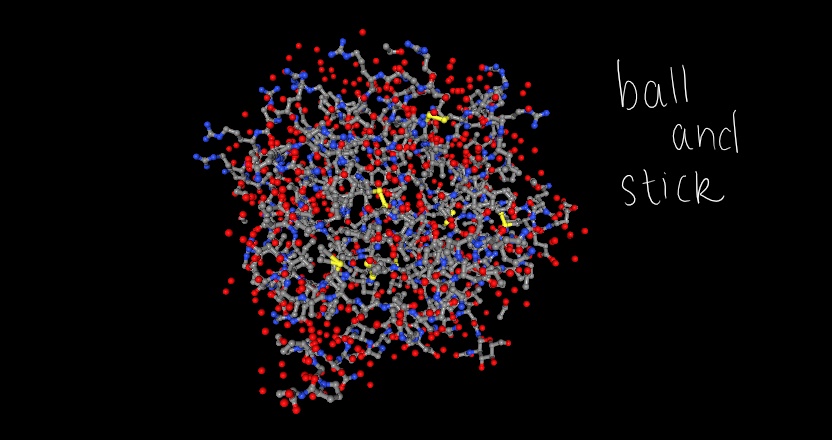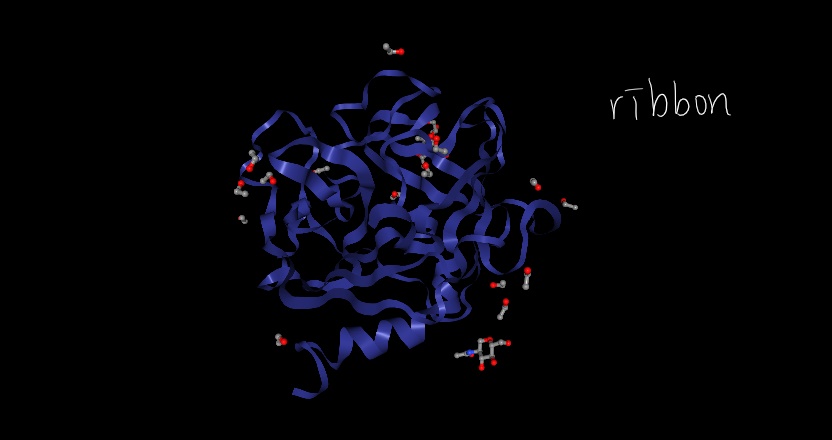- Azurocidin is a monocyte- and fibroblast-specific chemotactic glycoprotein with antibacterial activity: it is cytotoxic to many species of Gram-negative bacteria, such as P. aeruginosa.
- Amino acid sequence
- It is 251 amino acids long, and its most common amino acid is glycine.
A pBLAST search gave 100 sequences with homology to azurocidin, with the sequences of highest homology being azurocidin in the chimpanzee, Sumatran orangutan, and macaque.
- The structure was deposited into the RCSB database in 1998, and has a 1.2 Angstrom resolution.
- The structure includes some small molecule ligands, including chlorine and ethanol.
- One protein, a heparin binding protein, was found with a similar structure to azurocidin, with more than 40% sequence identity to chain 4l8H.A.



